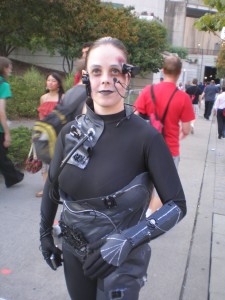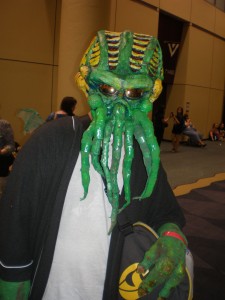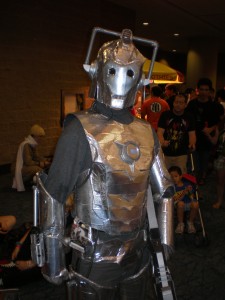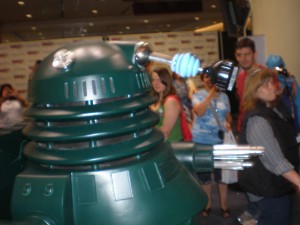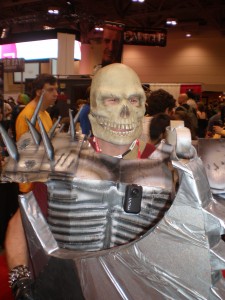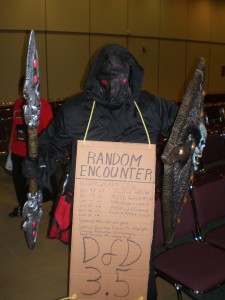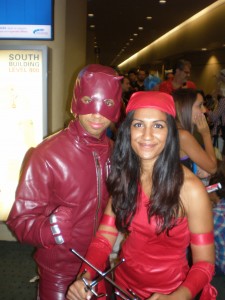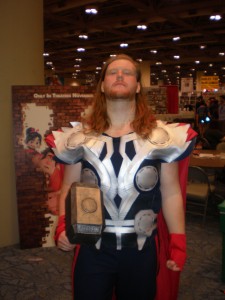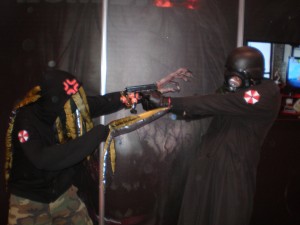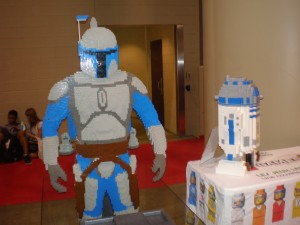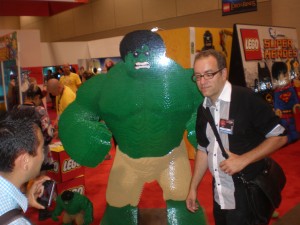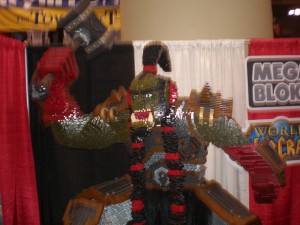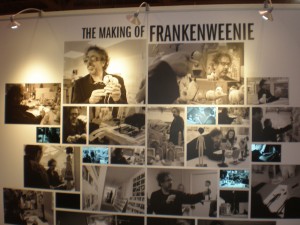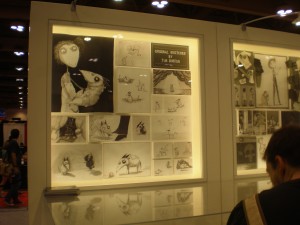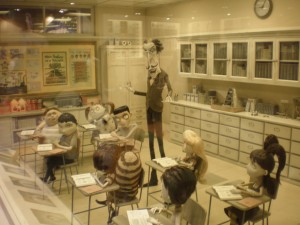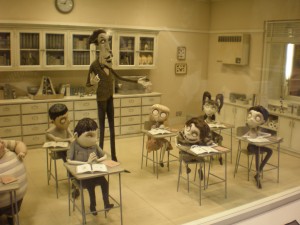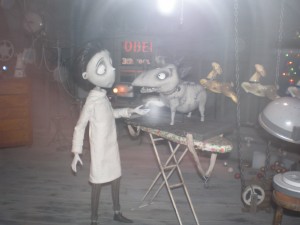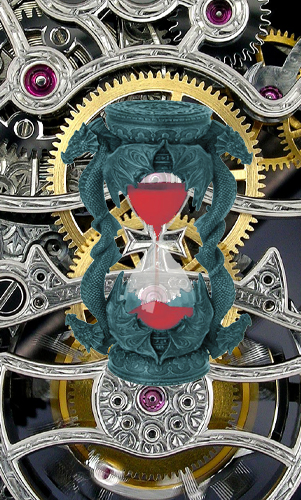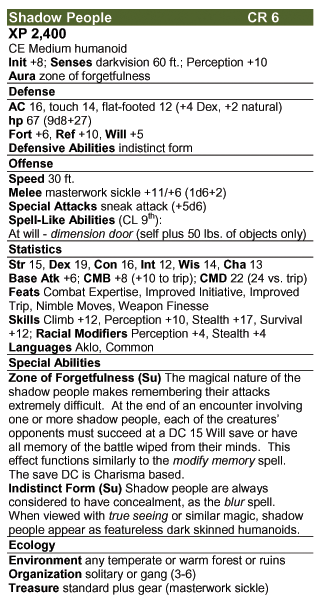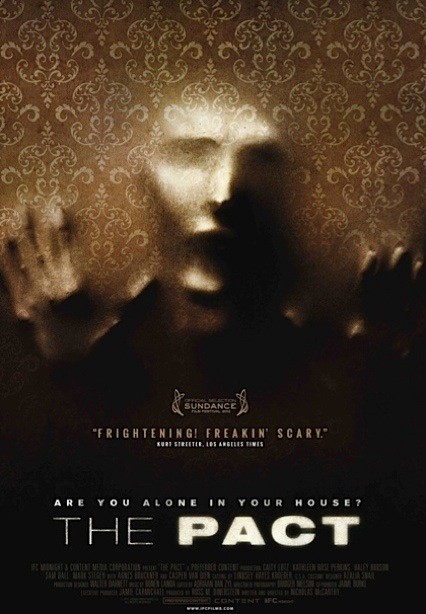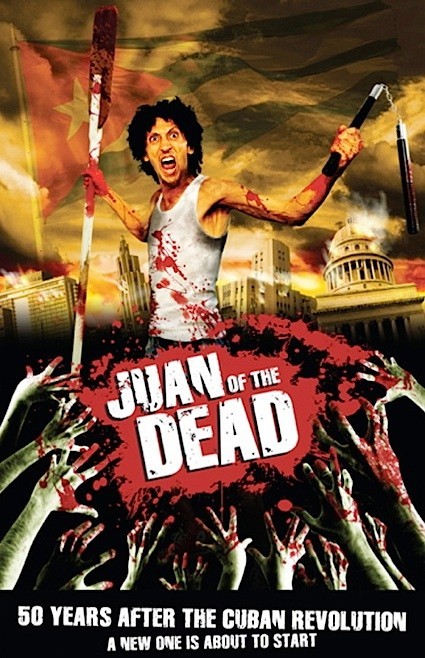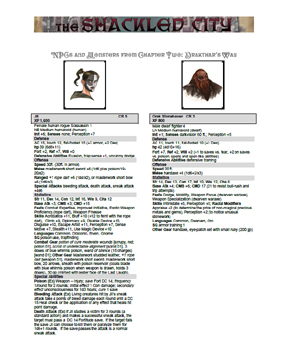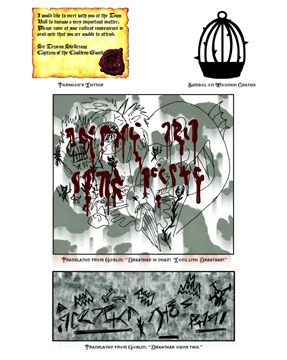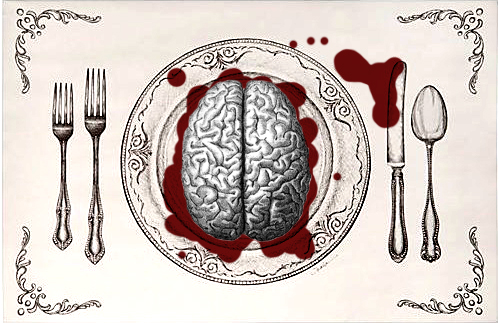As I mentioned in the first part of my coverage of this year’s Fan Expo, it was nice to see gamers being catered to specifically in the convention’s programming and guest choices. While I enjoy the buffet approach that Fan Expo takes, tabletop gamers are definitely in the minority among the other fandoms, so there’s a worry that our interests will be overlooked. That fear was unfounded, as there were plenty of treats for gamers to fill their plates with (and Fan Expo has had some great gaming guests in the past – it’s where I had the chance to meet Gary Gygax before he passed away).
Although time constraints prevented me from chucking some dice in the game room (I was only there for the Friday), I was able to attend two of the con’s gaming seminars: Robin’s Laws of Gamemastery and the Gamemaster Master Class. Both seminars had excellent turnouts, were a lot of fun, and in spite of having read stacks of Dragon magazine articles on the subject (many of them written by the seminars’ panelists), I still found them informative. It just goes to show that there is always something for old Dungeonmasters to learn. I took the opportunity to jot down the most interesting points of both seminars to share them with those who missed out (yeah, this would have been a good time to record a video of the whole thing, but that’s beyond my tech level and honestly, I find of few paragraphs of highlights more interesting than two hours of video).
Robin’s Laws of Gamemastery
 Toronto’s own Robin Laws hosted a solo panel (an oxymoron I guess, but I can’t think of a better term) on GM advice, fielding some pretty tough questions from the audience and taking the conversation in unexpected directions.
Toronto’s own Robin Laws hosted a solo panel (an oxymoron I guess, but I can’t think of a better term) on GM advice, fielding some pretty tough questions from the audience and taking the conversation in unexpected directions.
He had an interesting take on the place of ‘story mechanics’ (that is, mechanics in a game that deal with social interaction or other non-combat activities) in rpgs. In games with these kinds of mechanics (say 3e D&D or Pathfinder), Laws sees a player’s character sheet as an order slip for the DM. If a player chooses to create a sub-optimal combatant by taking ranks in brewing, music or bargaining, she is telling the DM that she wants those things included in the game. The player won’t mind that they are a little weaker in combat if they can feel important and shine when later in the campaign she can brew a legendary beer for the king, compose a famous symphony or broker a peace agreement. I really appreciated the fresh perspective (and a player-centric one at that) on the moldy old role-playing vs. roll-playing debate, especially since I favor those mechanics and still consider myself a role-player.
Laws also had some great advice for how to handle rolling those social skill checks at the table if you feel they are an impediment to role-playing. Instead of having the player state what their character is going to say and then making the roll (which is what I do, with a bonus or penalty based on what the player says), have them make the roll first and role-play it out based on the outcome. Then, when the Rogue with the eighteen Charisma rolls a 1 for her Diplomacy check, have her decide why she uncharacteristically failed so badly. Perhaps she is racist against Dwarves, or has a hard time talking to people of the opposite sex… This is a trick I’m definitely going to talk to my players about bringing to our game.
When asked his opinion about ‘killer dungeons’, Laws brought up what he called the Tomb of Horrors paradox, which I thought was pretty funny. Tomb of Horrors is seen as an anathema to new-school sensibilities and is often used as an example of how not to design a scenario (what with its arbitrary puzzles and instant-death traps). Yet everyone seems to have a gleeful Tomb of Horrors war story, recounting fondly how their entire party was killed by this crushing room or that grinning devil face, so there has to be a place in the gaming world for this kind of adventure.
Finally, I managed to sneak in a question of my own about monster design. I asked Robin; out of all the creatures he has created for rpgs, what monster was he the most proud of? Like most writers, his favorite was his most recent (we’re a fickle bunch): a strange otherworldly hairball for the Esoterrorists game that possesses corpses and turns them into serial-killers. Apparently, he wanted to try and include as many horror tropes as possible in a single monster. I’m not sure about the whole ‘hairball’ thing, but the rest intrigued me enough to look up the game.
Gamemaster Master Class
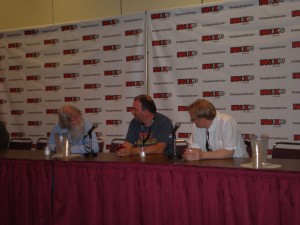 While the second seminar I attended covered a lot of the same ground as the first, the change in format (five panelists instead of one) gave it a very different feel. Panelists Ed Greenwood, Monte Cook, Malcolm Sheppard, and the Chatty DM weren’t able to get as in-depth on every topic as Laws was (that’s just the nature of splitting the time between so many people), but the riffing between the four of them was very entertaining and often hilarious. Also, I was pretty psyched to finally meet Ed Greenwood, who I’ve always ‘just missed’ at these kind of events, and get Monte Cook to sign my copy of Return to the Temple of Elemental Evil (which he was gracious enough to do, even as the event organizers where trying to kick us out of the room).
While the second seminar I attended covered a lot of the same ground as the first, the change in format (five panelists instead of one) gave it a very different feel. Panelists Ed Greenwood, Monte Cook, Malcolm Sheppard, and the Chatty DM weren’t able to get as in-depth on every topic as Laws was (that’s just the nature of splitting the time between so many people), but the riffing between the four of them was very entertaining and often hilarious. Also, I was pretty psyched to finally meet Ed Greenwood, who I’ve always ‘just missed’ at these kind of events, and get Monte Cook to sign my copy of Return to the Temple of Elemental Evil (which he was gracious enough to do, even as the event organizers where trying to kick us out of the room).
Most of the time was spent discussing what I call ‘player management’ (things like problem players, meta-gaming, player expectations, etc.), which while interesting and a boundless source of humor, isn’t all that useful to me, since I game with close friends whom I’ve played with for years (going on twenty plus years for some of them). We’ve worked out most of the kinks when it comes to things like that, and besides, they’re awesome (in case they read this). I will admit to enjoying a certain amount of schadenfreude listening to other DMs’ horror stories though.
The most interesting bits came when the panel were asked about running memorable villains. Malcolm Sheppard suggested using what he called the ‘devil’s advocate method’ – getting a different player to run the villain each session. It’s a very cool idea, and I love that it harnesses players’ competitive nature. If the villain is the player’s character, even if only temporarily, he will do his damnedest to keep it alive – probably more effectively than the DM. Sheppard did give this advice with a pretty funny caveat though: he warned DMs to underpower their villains, since in his experience, players were much better at dreaming up ways of killing each efficiently than he ever could. While I don’t think my group is ready to wholly embrace this technique (who wants to give up their own character in a fight with Big Bad?), I think it would work perfectly for players whose character has just died, keeping them involved in the game instead of waiting bored on the sidelines.
Ed Greenwood warned against focusing so much on a single villain if you want the campaign to continue beyond their demise. When you invest so much character motivation into a single enemy, they become the source of the game’s momentum, and without them there is no movement (I believe Thulsa Doom said it best in Conan the Barbarian: “I am the wellspring from which you flow…”). Greenwood’s soluti on to this dilemma, which you can see played out in his game-world the Forgotten Realms in spades, is to make sure that the characters occasionally get entangled with unrelated side-villains. When the PCs’ nemesis is defeated it’s easy for one of these enemies to pick up the mantle of arch-villain.
on to this dilemma, which you can see played out in his game-world the Forgotten Realms in spades, is to make sure that the characters occasionally get entangled with unrelated side-villains. When the PCs’ nemesis is defeated it’s easy for one of these enemies to pick up the mantle of arch-villain.
Conversely (I believe his words were “even though Ed Greenwood told you not to”), Monte Cook had a sneaky trick to help transform any recurring villain into a character the players will hate with every fibre of their being (and really, it might be weird, but DMs live for that). Basically, Cook’s advice is to have everything the PC’s do be a part of the villain’s plan, even (especially) when they win. Rescued the Princess from bandits? Excellent, now the villain can blackmail the King into offering her hand in marriage. Slew the dragon? Perfect, it was guarding a magical gate the villain needed access to. The trick here is to let things play out as they will naturally, and figuring out how it fits into the villain’s plan in-between sessions. Admittedly it’s a bit of a cheat, but I think it nicely replicates the highly organized mind of a manipulative and super intelligent antagonist. Besides, I can attest first hand that when I used a slightly modified form of this in a Planescape campaign that it generated a healthy dose of hate, and there’s no stronger engine to drive your campaign forward.
